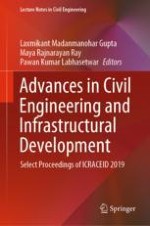2021 | OriginalPaper | Buchkapitel
Estimation of Design Shear Strength of Concrete Using Genetic Programming
verfasst von : Preeti Namjoshi, Shardul Joshi
Erschienen in: Advances in Civil Engineering and Infrastructural Development
Verlag: Springer Singapore
Aktivieren Sie unsere intelligente Suche, um passende Fachinhalte oder Patente zu finden.
Wählen Sie Textabschnitte aus um mit Künstlicher Intelligenz passenden Patente zu finden. powered by
Markieren Sie Textabschnitte, um KI-gestützt weitere passende Inhalte zu finden. powered by
